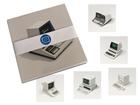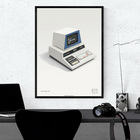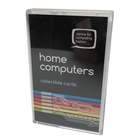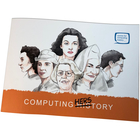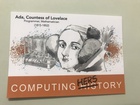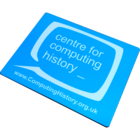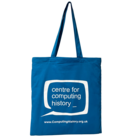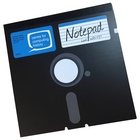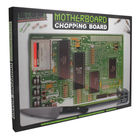Computing Books published by McGraw Hill
The following is a list of Computing Books published by McGraw Hill in the Centre for Computing History collection. It is not an exhaustive list of and other books may have been published. If you have a book that you would like to donate to our collection, please view our donations page.There are 21 Computing Books published by McGraw Hill in our collection :
| Order By : Title - Release Date - Publisher |
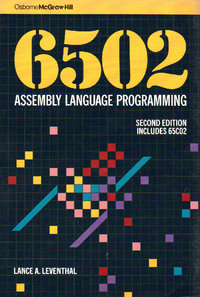 Date: 1986
6502 Assembly Language Programming
Date: 1986
6502 Assembly Language Programming
Second Edition
Publisher: McGraw Hill
Author: Lance A. Leventhal
Platform: 6502
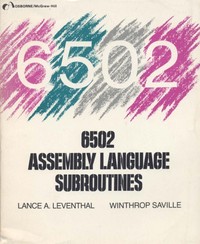 Date: 1982
6502 Assembly Language Subroutines
Date: 1982
6502 Assembly Language Subroutines
6502 Assembly Language Subroutines
ISBN-13: 9780931988592
Publisher: McGraw Hill
Author: Lance A. Leventhal, Winthrop Saville
Platform: 6502
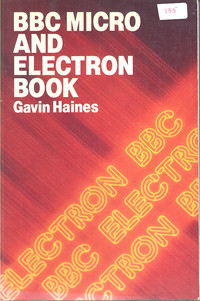 Date: 1985
BBC Micro and Electron Book
Date: 1985
BBC Micro and Electron Book
Publisher: McGraw Hill
Author: Gavin Haines
Platform: BBC Micro
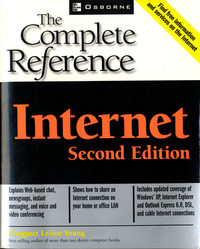 Date: 2002
Complete Reference Internet 2nd Edition
Date: 2002
Complete Reference Internet 2nd Edition
General reference book on the internet
Publisher: McGraw Hill
Author: Margaret Levine Young
Platform: None
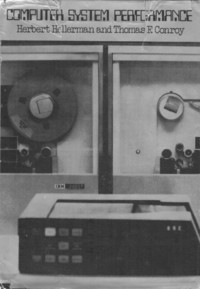 Date: July 1995
Computer System Performance
Date: July 1995
Computer System Performance
Computer System Performance
Author: Herbert Hellerman, Thomas F. Conroy
Publisher: McGraw-Hill Inc.,US
380 pages
ISBN-13: 9780070279537
ISBN: 0070279535
Publication date: 07/1975
Hardcover
Publisher: McGraw Hill
Platform: Performance
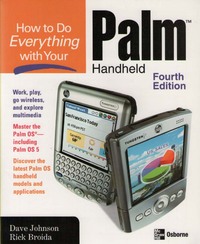 Date: 2003
How to Do Everything with Your Palm Handheld
Date: 2003
How to Do Everything with Your Palm Handheld
Put down that flimsy manual and get to the heart of the matter with the fourth edition of this step-by-step Palm goldmine. Easy-to-follow and filled with information, this handy guide will help readers achieve the most from their Palm Handheld.
This guide provides expanded coverage of the palm as a portable office to address the needs of a growing number of palm users who work on documents, update databases, and manage their finances and schedules from their handheld device while on the go.
Publisher: McGraw Hill
Author: Dave Johnson and Rick Broida
Platform: Palm
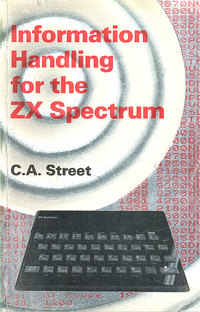 Date: 1983
Information Handling for the ZX Spectrum
Date: 1983
Information Handling for the ZX Spectrum
Publisher: McGraw Hill
Author: C. A. Street
Platform: ZX Spectrum
 Date: 1984
Interfacing the BBC Microcomputer
Date: 1984
Interfacing the BBC Microcomputer
Publisher: McGraw Hill
Author: Colin Opie
Platform: BBC Micro
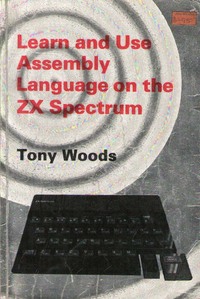 Date: 1983
Learn and Use Assembly Language on the ZX Spectrum
Date: 1983
Learn and Use Assembly Language on the ZX Spectrum
Machine code for action. Machine-code programs run very quickly, literally hundreds of times faster than the equivalent BASIC. And they are very powerful, enabling your computer to do things undreamed of by its manufacturer!
The ZX Spectrum uses a Z80 processor, and machine-code programs are written in Z80 assembly language. This book is a complete course in Z80 assembly language, right from the beginning. Written by an experienced teacher and programmer, it is ideal for anyone with a knowledge of BASIC and contains many complete-and useful- programs.
Assembly software. The assembly-language listings in this book can of course be hand assembled into machine code, but for speed and accuracy you should use the McGraw-Hill ZX Spectrum Machine Code Assembler program, available on cassette for the 16K or 48K Spectrum. All the program listings have been specially written to match this software
Publisher: McGraw Hill
Author: Tony Woods
Platform: ZX Spectrum
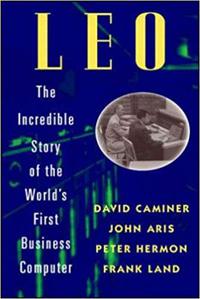 Date: 1998
LEO: The Incredible Story of the World's First Business Computer
Date: 1998
LEO: The Incredible Story of the World's First Business Computer
Publisher: McGraw Hill
Author: David Caminer
Platform:
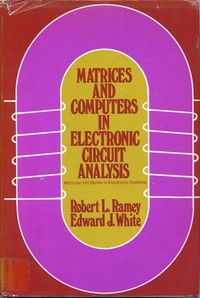 Date: 1971
Matrices and computers in electronic circuit analysis
Date: 1971
Matrices and computers in electronic circuit analysis
Matrices and computers in electronic circuit analysis / by Robert Lee Ramey and Edward John White
by Ramey, Robert Lee
New York : McGraw-Hill, [1971]
Electronic circuit design -- Data processing
390 p. : illus ; 23 cm.
Includes bibliographical references
Publisher: McGraw Hill
Author: Robert Lee Ramey and Edward John White
Platform:
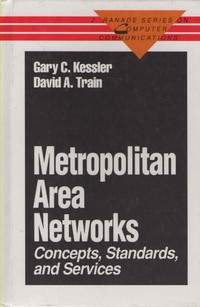 Date: 1991
Metropolitan Area Networks
Date: 1991
Metropolitan Area Networks
Publisher: McGraw Hill
Author: Gary Kessler, David Train
Platform: Networks
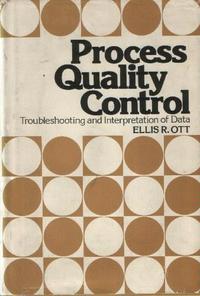 Date: 1975
Process Quality Control
Date: 1975
Process Quality Control
Troubleshooting and Interpretation of Data
Review from Amazon:
"Full of numerous case studies that give insight into the kind of detailed process sleuthing that process capability studies are all about ... it should be a part of every serious quality practitioner's library."
--Bert Gunter in Quality Progress Magazine* Want to design fail-safe methods for finding and solving problems in complex processes? Discover new ways to coax answers from complicated data? Uncover hidden value in perplexing findings? If you want the most sophisticated and insightful approach to process sleuthing and process capability available, you've come to the right place. Packed with case studies drawn from real industrial processes, Process Quality Control demonstrates how to collect, crunch, and analyze data, step by step. Along the way, it gives you examples of successful, real-world applications used to solve tough questions. This book can help you: Learn time-tested troubleshooting methodologies. Discover better ways to gather, interpret and analyze data. Correctly interpret findings with time-ordered data. Resolve difficult, puzzling, or conflicting results with proven methods. Gain new insight in the analysis of attributes and variables data. Employ newer methods of analysis to maximize the information from your data. Draw problem-solving solutions from the identification of outliers in data. Apply graphical analysis to experimental designs. For anyone charged with discovering problems in processes, or suggesting improvements, there could be no more worthwhile--or inspiring--reading than Ellis Ott's, Edward G. Schilling's, and Dean V. Neubauer's Process Quality Control.
Publisher: McGraw Hill
Author: Ellis R. Ott
Platform: Processes
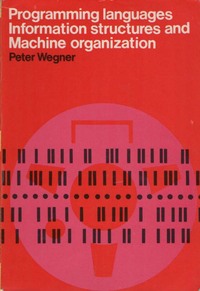 Date: 1971
Programming Languages, Information Structures, and Machine Organization
Date: 1971
Programming Languages, Information Structures, and Machine Organization
McGraw Hill International Student Edition 1971
Language: English
Publisher: McGraw Hill
Author: Peter Wegner
Platform: Programming
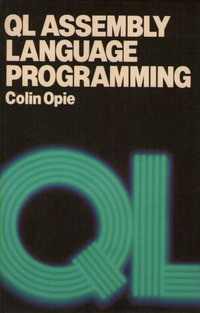 Date: 1st October 1984
QL Assembly Language Programming
Date: 1st October 1984
QL Assembly Language Programming
Publisher: McGraw Hill
Author: Colin Opie
Platform: QL
 Date: 1964
Schaum's Outline of Theory and Problems of Mechanical Vibrations
Date: 1964
Schaum's Outline of Theory and Problems of Mechanical Vibrations
Publisher: McGraw Hill
Author: William W Seto
Platform:
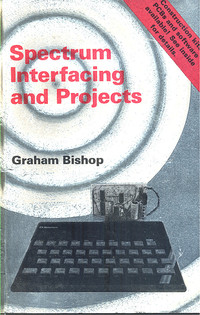 Date: 1983
Spectrum Interfacing and Projects
Date: 1983
Spectrum Interfacing and Projects
Publisher: McGraw Hill
Author: Graham Bishop
Platform: ZX Spectrum
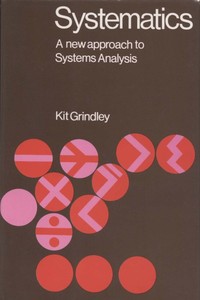 Date: 1975
Systematics : A New Approach to Systems Analysis.
Date: 1975
Systematics : A New Approach to Systems Analysis.
ISBN13: 9780894330209
Publisher: McGraw Hill
Author: Kit Grindley
Platform: Tex
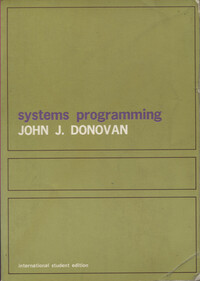 Date: 1st June 1975
Systems Programming
Date: 1st June 1975
Systems Programming
International Student Edition.
Publisher: McGraw Hill
Author: John J. Donovan
Platform: Programming
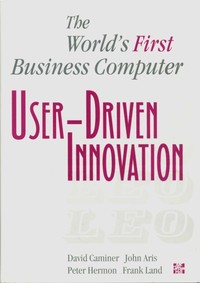 Date: 1994
User-Driven Innovation: The Worlds First Business Computer
Date: 1994
User-Driven Innovation: The Worlds First Business Computer
Extracts from Reviews
Professor Dick Nolan of the Harvard University Business School writes in his introduction to the book:
"This story has the best qualities of a Harvard Business School case study: it is an important event in the history of the business.
It is a study about extraordinary people ... As confident executives they look outside their company, in other countries, at universities to discover new ways of doing things and fresh ideas. In their bold actions, trust shows through as a foundation in implementing their vision. Young people are given free reign and do not disappoint. A resulting exciting, challenging ‘can-do' culture is heard in the words of the people who were there."
Dr Terry Gourvish, Director Business History Unit, LSE, inLSE Business History Newssheet,
"This is a major contribution to the history of computing and computers in the UK. A full scale case study of LEO computers, written by members of the team who experienced all its trials and tribulations, it provides a fascinating insight into the development by J. Lyons & Co. of the first business computer in the UK."
Neil Fitzgerald, editor of CA magazine, in The Scotsman, Business section. .
"Can-do culture, empowerment, user-driven innovation, business process re-engineering, flat organisations, quality, short lines of communications and decision making. We are led to believe that these are radical, modern ideas. However, a book that has come into my hands shows that they were being successfully harnessed almost half a century ago, to create the most significant event ever in business management.
The editors ... tell the story of how they and others built and put to work the world's first business computer. This did not happen in California's Silicon Valley, but at Cadby Hall, the ... west London premises of Lyons.
An important facet was that they felt they should always take a strategic view of the whole function to be computerised and make recommendations for improvements before going to work."
Dr John Pinkerton, review in ICL Technical Journal
"Telling the story of how the foundations of data processing were laid from 1949 onwards has evidently been a labour of love.
This is a work of scholarship but eminently readable nevertheless. It will be seen as a major contribution to the history of business computing; it is strongly recommended for anyone already working in or studying to enter the field of IT."
Michael Braithwaite, Deloitte, Touche, European Journal of Information Systems.
"I commend this book to a wide audience. To the general reader it stands as a very well written and exciting account of technological innovation. To the business school student it presents a remarkable story of technological success that, as a commercial venture was flawed, perhaps by factors beyond the control of the players."
Professor George Mitchell, review published Journal of Operational Research Society..
"This fascinating book tells the life story of LEO. Rather over a third of the book is the historical record, carefully researched and engagingly written up by Caminer. The rest is largely personal memoirs of those involved in the early days, including accounts of several innovative applications. The whole is rounded off by an evaluation by Aris. The book's value is enhanced by the style of writing. Those who worked in LEO, especially in its earlier days, including many of the book's authors, exercised an influence on the development of business computing in the UK quite disproportionate to their numbers.
I found this book a good read and one which exited several strands of thought. Although its main market will be among scholars and students of IT and business studies, it deserves a wide readership in the OR community."
John Perkins,National Computer Centre Newsletter,
"The book is a fascinating adventure story in which the dynamics of an extraordinary group of people made the seemingly impossible happen."
Professor John Ward in theJournal of Strategic Information Systems.
"The story of that first business computer: Leo - Lyons Electronic Office - is told in this book. Whilst it is history, reflection on what was achieved and not achieved and why still has many lessons of relevance to the successful use of IT today - we seem to be learning painfully and slowly!.
.... a review by John Aris of what of what he calls the ‘LEO approach' - an integrated combination of technology innovation, application and consultancy designed to enable significant business improvements from computer use in a range of situation. Many of these applications would be called ‘business process redesign' in the 1990s!
The wide range of contributors provide many different perspectives on what happened and views on why things evolved the way they did. It is a set of memoirs - often very personal ones - of a time when Britain could be said to have led the world in the application of this new technology.
... it is a book that we should all be grateful the authors took the time and trouble to get together and write. It is a story of extraordinary achievements, by a talented team..."
I. A. Lovelock in Management Accounting.
"This book is a first-hand account of how this astounding innovation came about. It is a flesh and blood, warts and all story related by the participants, brimming over with the same enthusiasm that enabled the unlikeliest of organisations to lead the way into the future that we are all familiar with today.
It concludes with different strands coming together to provide the essence of the LEO credo of comprehensive, integrated, secure, action stimulated implementations.
Professor T. Brady, Brighton University
"As well as being a fascinating piece of historical writing the book provides food for thought in the supposedly computer literate world of the 21st Century. Spectacular computer disasters such as the London Stock Exchange's Taurus system have left us with rather jaundiced perceptions about computer projects. Why were Lyons better at implementing computer systems?
One major factor was that before automating business processes the Lyons team ensured that they were well understood and ready for computerisation. Long before the prospect of computers came along, Lyons had established a systems research office with the brief to constantly search out how improvements might be made to the business by changing processes.”
Professor Paul Ceruzzi, Smithsonian Institute, Washington
"Most surveys of the history of computing mark the beginning of the commercial computer age with the delivery of the first UNIVAC in 1951. The better ones note the first delivery of a UNIVAC to a commercial, not government, customer (General Electric) in 1954. Only the best histories mention LEO, a computer built by the British catering company J. Lyons & Co. and first operational in September 1951, as the real beginning of commercial application of the stored-program computer."
Publisher: McGraw Hill
Author: David Caminer, John Aris, Peter Hermon, Frank Land
Platform: LEO
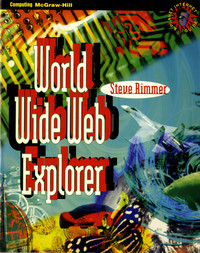 Date: 1996
World Wide Web Explorer
Date: 1996
World Wide Web Explorer
"The book begins by telling you the best way to connect to the Net with Web access in mind, and how to chose suitable software and establish an Internet account that will cost you as little as possible while providing the greatest flexibility possible."
Publisher: McGraw Hill
Author: Steve Rimmer
Platform: None

